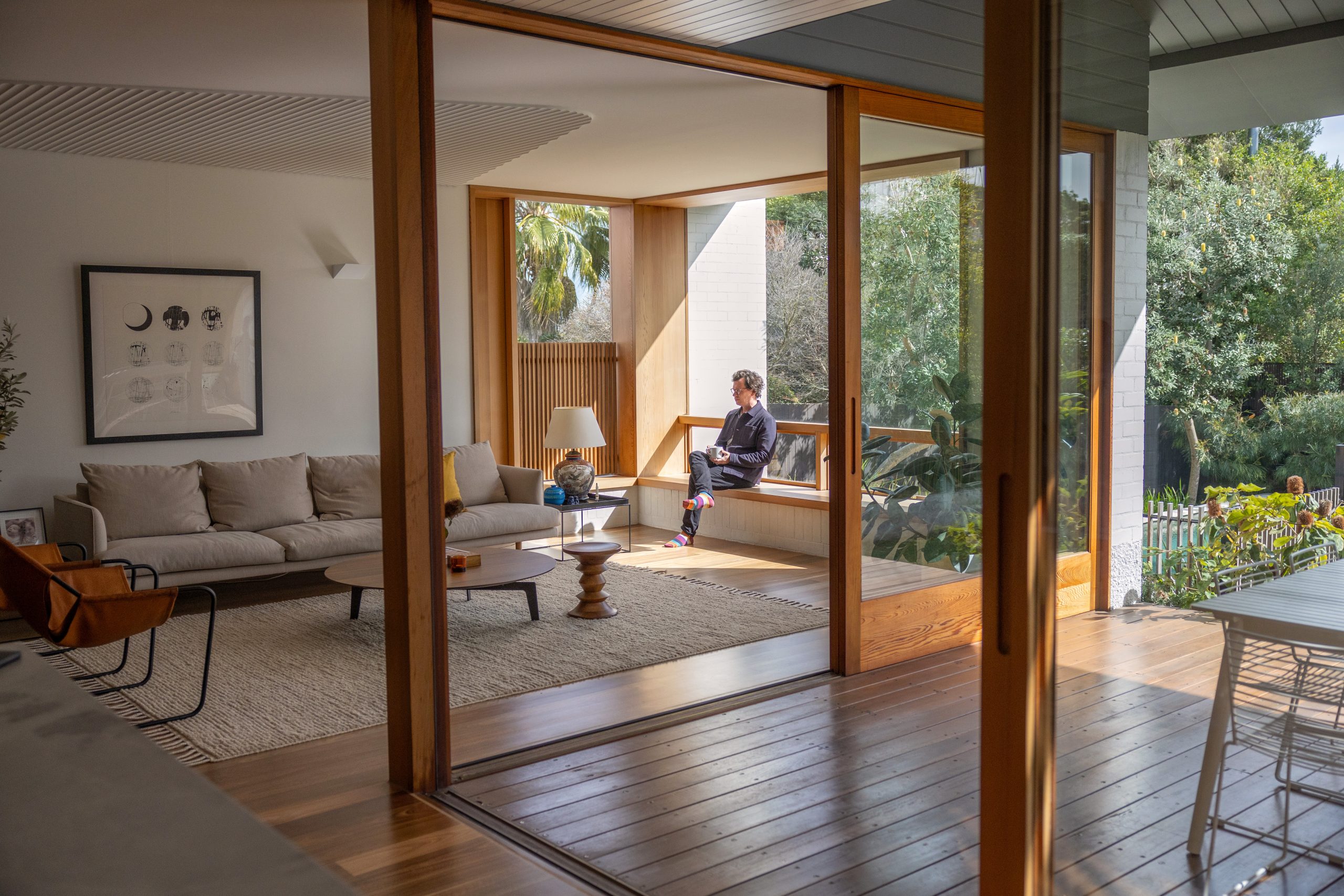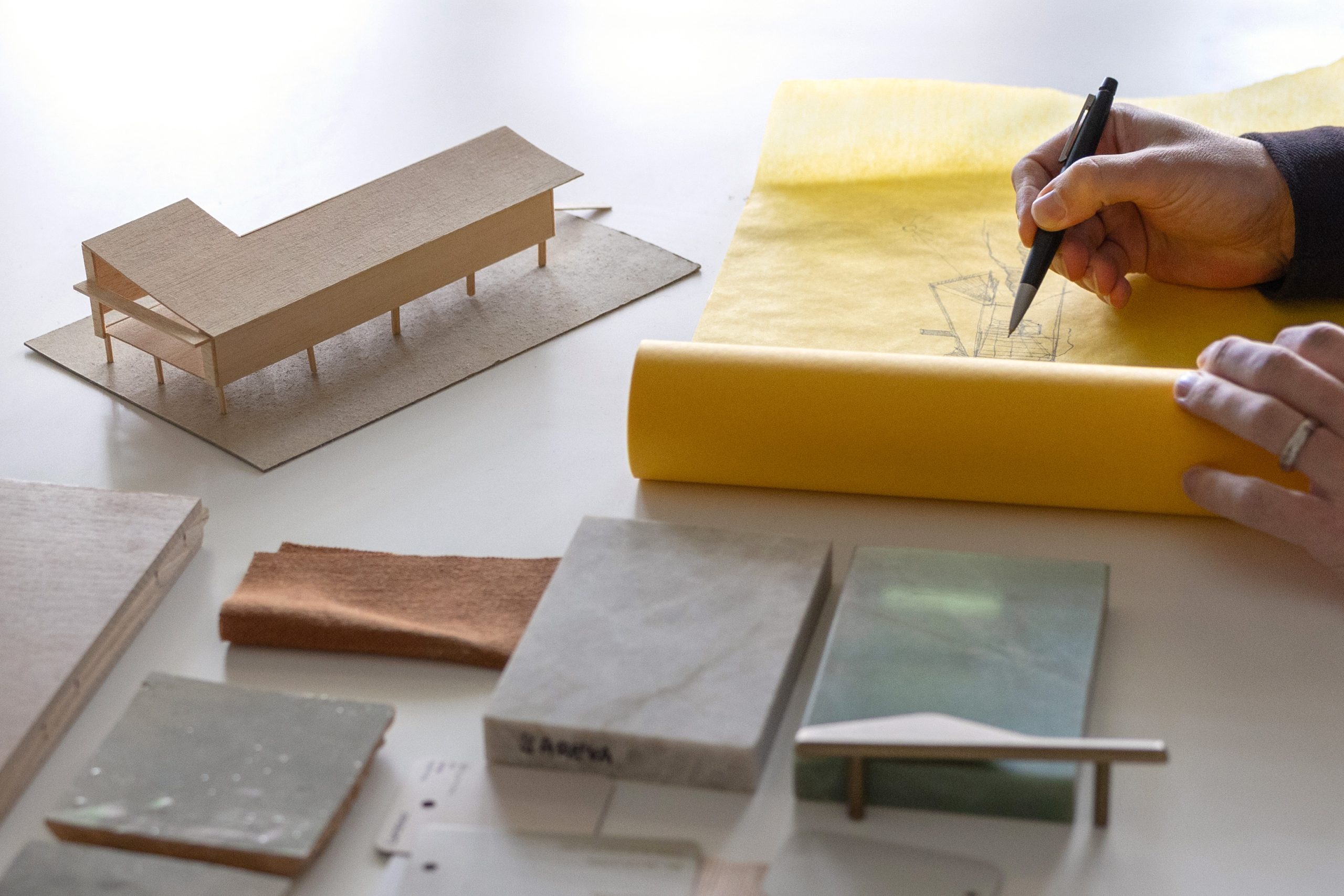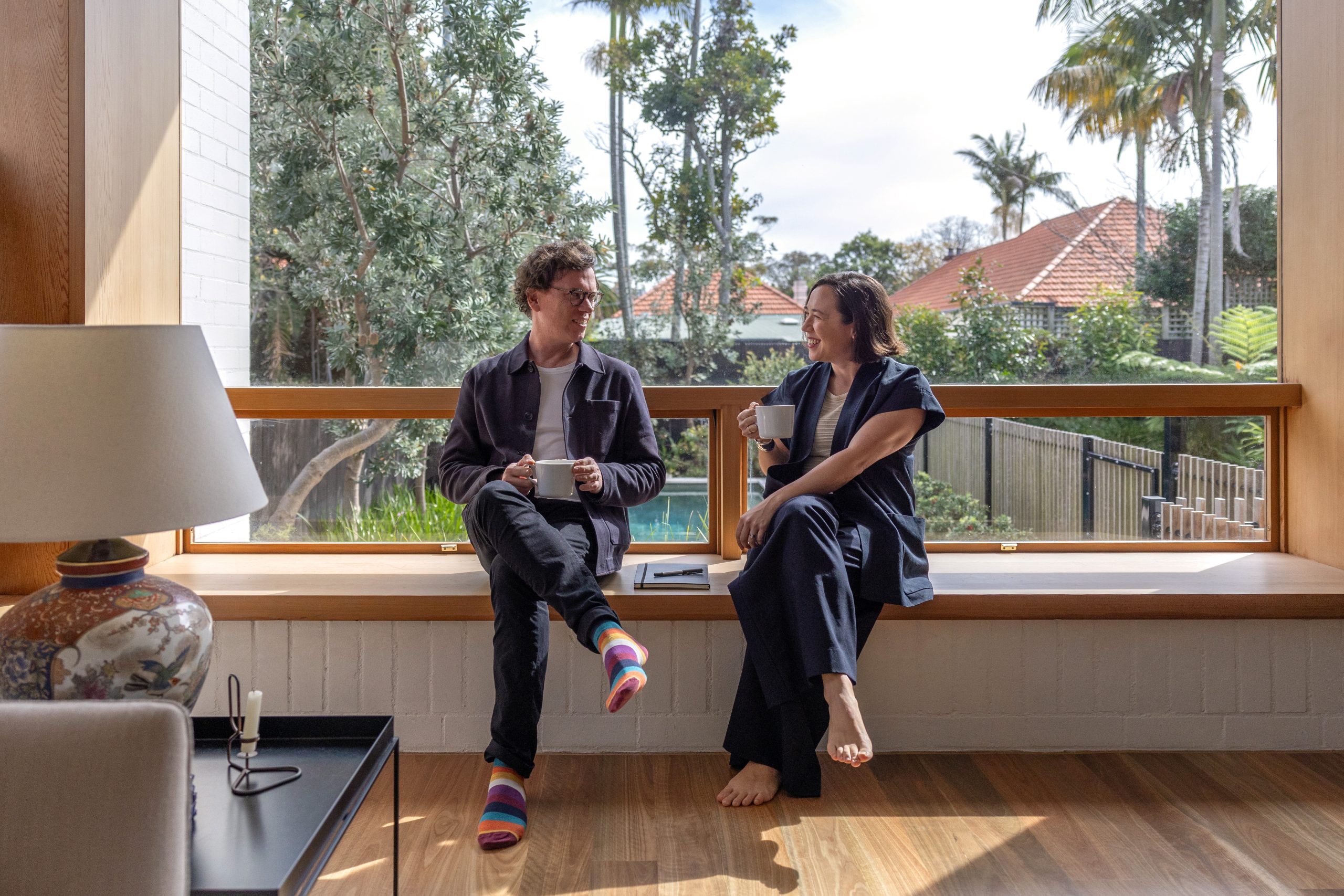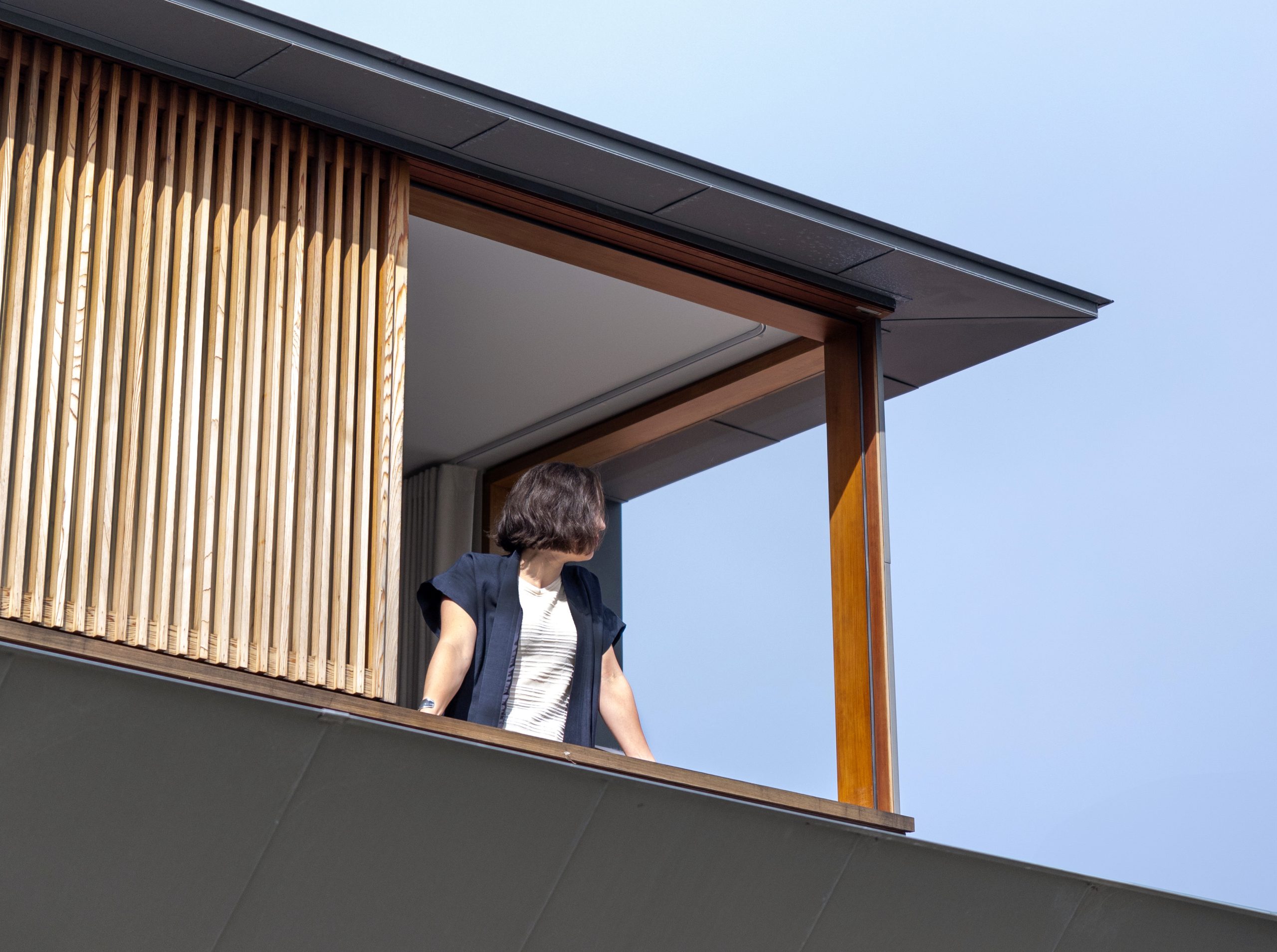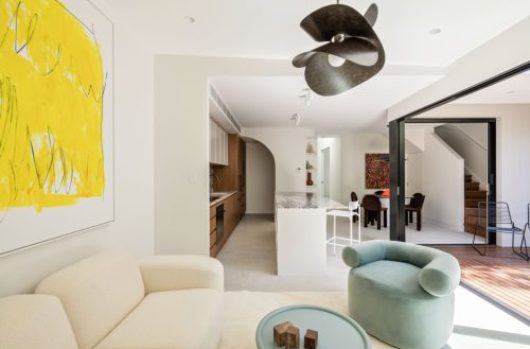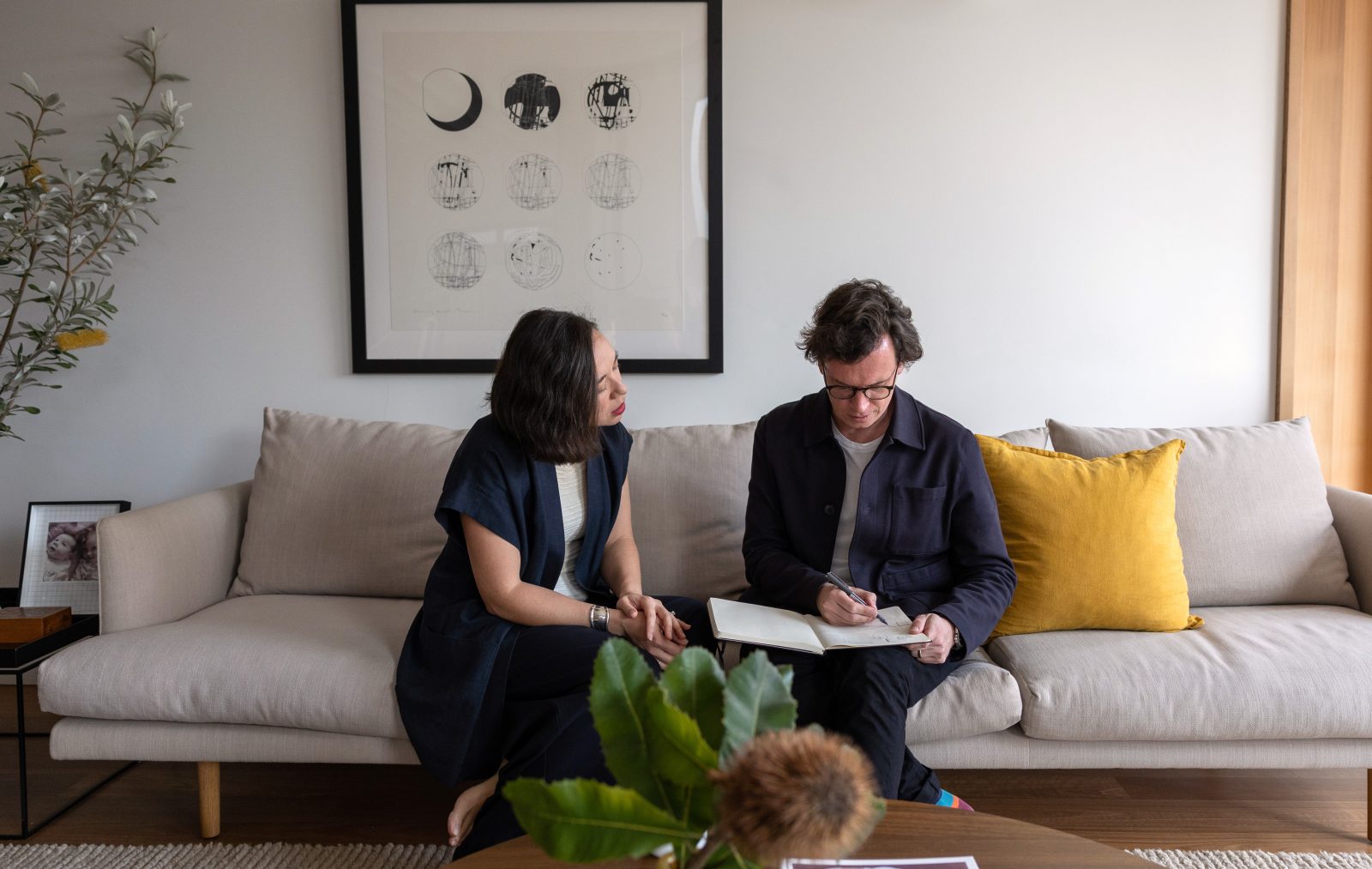
Architectural dreams and optimism with Downie North.
There is an unmistakable connection to nature and landscape in the work of Catherine Downie and Daniel North.
The architect duo behind Sydney-based practice Downie North, their homes are meticulously put together, without being precious, while conscious and responsive. They’re spaces that transform through the day and change with the seasons, nourishing to inhabit and delightful to experience.
- Mosman Minka, Downie North.
The virtue of their designs traverses Eastern Suburbs to North Shore, from a distinctive Queens Park semi, to the Middle Harbour masterpiece of ‘Castlecrag Courtyard’, to Mosman’s ‘Minka’ and nearby ‘House for BEES’.
Approaching a decade of designing under the Downie North label, while amassing a collection of awards along the way, BresicWhitney sits down to learn more about these spaces of pure beauty, and the strength of their collaboration with clients. Photographed on location, in their Mosman home.
Beyond the literal, what does being an architect mean to you?
Being an architect is to deeply explore the question of how to live well on this planet.
It is about understanding people, the nature of beauty, our relationships with each other and our relationship to the land. Architecture is a deeply human endeavour that encourages a wonderment for the future as well as an understanding of the past.
Approaching 10 years as a practice, how have you evolved?
When we started our practice we were intent on working for good people, and, with good people, doing our best to make our corner of the planet better than we found it. Whilst the scale of our work has changed over the years these central precepts have not. We feel very fortunate for the range of projects that we have been involved with and that many of our clients have become friends… keeping that scale of practice where you’re working hand in hand with your clients, contractors and builders and holding to your principles is not without sacrifice, however its been immensely satisfying.
- Castlecrag Courtyard, Downie North. Photography by Clinton Weaver.
Have your design principles changed in this time?
When starting on any new endeavour one must have a spirit of optimism for it to have any chance of success. Our optimism has grown, and our passion for architecture and sense of curiosity continues to grow, but it’s now balanced with greater confidence and patience. Having an outlook that is concerned with endurance and sustainability (in all senses of the word) only continues to strengthen as time moves on.
How do you ensure your designs meet the needs of the people who use them?
We spend a lot of time in conversation with our clients. Houses in a way are non figurative portraits of our clients, so as we come to know them better, together you enter a process of discovery of what the building can be. It’s an incredibly personal endeavour to design and build a house, so establishing and building trust must be done first. We never stop looking to improve a design for our clients, which means the design process never stops – you’re always thinking about how it can be made better.
When designing a space, what’s most important for both aesthetics and function?
When we commence on any project, we start by walking the site and in conversation with our clients distill what is essential in the brief. From there we are able to establish the primary tenets of the design, which in turn determines its functionality, and that in turn speaks to its form and aesthetics.
Prospect and refuge is a consistent theme, which is the ability to look out across the landscape but also feel protected. How our buildings deal with sun and air movement, the mediation between a view and privacy, are all crucial. All of these things deal with very elemental qualities found in the best buildings. We look for those sort of deeper qualities and if you search for these sort of principles, a good building will follow.
How do you balance creativity and practicality in your designs?
Good architecture and design exists at the intersection of both the rational and poetic. A door handle should be both functional but also beautiful to touch and look at. Gutters are practical necessities but expressing water collection in beautiful ways elevates things and creates a sense of joy in the every day. So there’s a beauty in what might be seen as commonplace that we’re always looking for.
- House for BEES, Downie North. Photography by Clinton Weaver.
How has the evolution of technology changed your approach to architecture?
We always begin with hand drawing. So technology is really only an extension of this process. We wouldn’t say our approach to architecture has changed as much as our ability to communicate faster. 3D modelling, computer renders and fly-throughs have all added to our ability to communicate our ideas with our clients, although there is still nothing as wonderful as a hand sketched perspective for capturing the elusive beauty of light and space. It is dependent on perseverance, optimism and the dream of what could be.
- Mosman Minka, Downie North.
Ultimately, what makes a space/project successful?
A happy client, a happy builder, and a happy architect.
What is the future of architecture?
Architecture is more important now than ever. As our climate changes and more pressure is put on cities, it will be the architect’s responsibility to address these issues, to intelligently and beautifully design a better future. It is dependent on perseverance, optimism and the dream of what could be.
